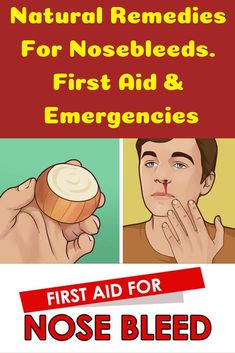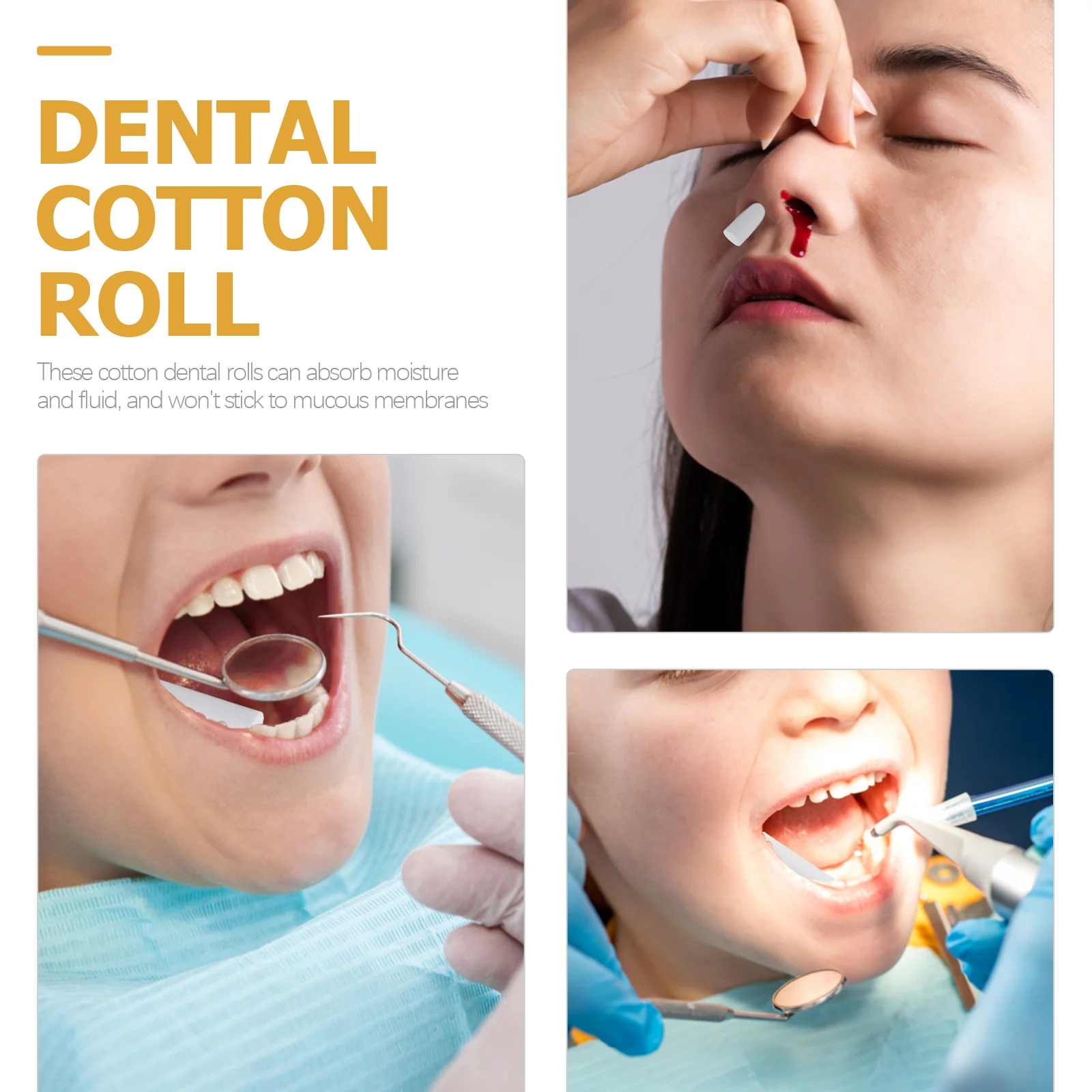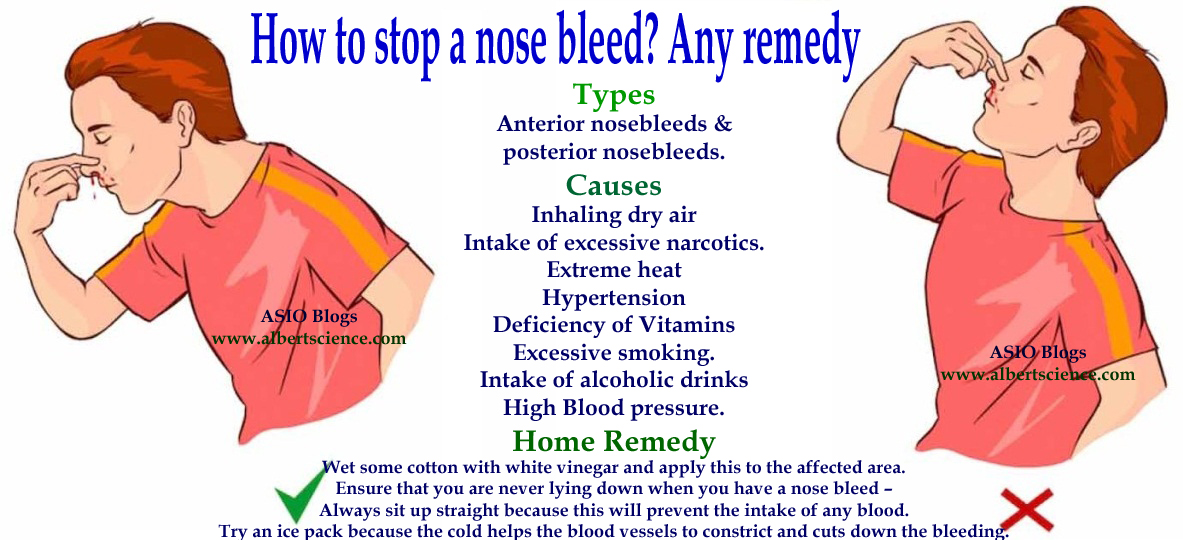Cure for bloody nose. Effective Techniques to Stop and Prevent Nosebleeds: Expert Tips and Remedies
How to stop a nosebleed quickly and safely. What causes nosebleeds and when to seek medical attention. Which prevention methods can reduce the frequency of nosebleeds. How to manage nosebleeds in different situations.
Understanding Nosebleeds: Causes and Risk Factors
Nosebleeds, while often startling, are a common occurrence that can affect people of all ages. Understanding the underlying causes and risk factors can help in both prevention and management of this condition.
Common causes of nosebleeds include:
- Dry climate
- Heated indoor air during winter months
- Use of steroid nasal sprays
- Direct injury to the nose
- Blood-thinning medications (anticoagulants)
Environmental factors play a significant role in the occurrence of nosebleeds. The dry air, particularly during winter months, can lead to the drying and cracking of the nasal membranes, making them more susceptible to bleeding. Similarly, heated indoor air can exacerbate this issue by further drying out the nasal passages.

Individuals who use steroid nasal sprays for conditions such as allergies or sinus problems may also be at a higher risk of experiencing nosebleeds. These sprays can thin the nasal tissues over time, making them more prone to bleeding.
Do certain medical conditions increase the risk of nosebleeds? Yes, some medical conditions can make nosebleeds more likely. People with high blood pressure, blood clotting disorders, or those taking blood-thinning medications are at a higher risk of experiencing nosebleeds. Additionally, frequent nose picking, excessive nose blowing, or inserting foreign objects into the nose can also lead to nosebleeds.
10 Effective Steps to Stop a Nosebleed
When faced with a nosebleed, it’s essential to know the proper techniques to stop the bleeding quickly and safely. Here are ten effective steps to manage a nosebleed:
- Stay calm: Nosebleeds can be alarming, but remember that they are rarely dangerous.
- Lean forward: This position prevents blood from flowing down your throat.
- Spit out any blood in your mouth: Avoid swallowing blood as it can cause nausea.
- Remain upright: Do not tilt your head back or lie flat to prevent choking.
- Use a decongestant spray: Apply three sprays of a product like Afrin to the bleeding nostril.
- Avoid foreign objects: Do not pack your nose with tissues or other items.
- Pinch your nose: Apply firm pressure to the soft part of your nose for 10 minutes.
- Use a clock: Time the pressure application accurately and resist checking prematurely.
- Reapply if needed: If bleeding persists, use a cotton ball soaked in nose spray and pinch again.
- Check your blood pressure: High blood pressure can contribute to nosebleeds.
Why is it important to lean forward during a nosebleed? Leaning forward helps prevent blood from flowing down your throat, which can cause nausea and vomiting. It also allows you to monitor the bleeding more effectively and reduces the risk of choking on blood.

Post-Nosebleed Care: Essential Aftercare Tips
After successfully stopping a nosebleed, proper aftercare is crucial to prevent recurrence and promote healing. Here are some essential tips to follow:
- Avoid blowing your nose for at least 48 hours after the bleeding stops.
- Refrain from heavy lifting or strenuous physical activities for up to two weeks.
- Do not pick up young children or babies during this recovery period.
- Keep your head elevated while sleeping to reduce pressure on the nasal blood vessels.
- Use a humidifier in your room to maintain moisture in the air.
- Apply a thin layer of petroleum jelly inside your nostrils to keep them moisturized.
How long does it typically take for the nasal passage to heal after a nosebleed? The healing process can take up to two weeks. During this time, it’s important to be gentle with your nose and avoid activities that might trigger another bleed. This includes refraining from blowing your nose forcefully, avoiding hot showers, and staying hydrated to keep your nasal passages moist.

When to Seek Medical Attention for Nosebleeds
While most nosebleeds can be managed at home, there are situations where medical intervention is necessary. It’s crucial to recognize these signs to ensure prompt and appropriate care.
Seek immediate medical help if you experience:
- Bleeding that does not stop after 30 minutes of applying pressure
- Very heavy bleeding that pours down the back of your throat and out of your nose
- Nosebleeds accompanied by symptoms like high blood pressure, light-headedness, chest pain, or rapid heart rate
- Frequent nosebleeds occurring three to four times weekly or more than six times per month
Why is it important to monitor the frequency of nosebleeds? Frequent nosebleeds can be a sign of underlying health issues such as blood disorders, high blood pressure, or nasal tumors. If you’re experiencing recurrent nosebleeds, it’s essential to consult a healthcare professional for a thorough evaluation and appropriate treatment.
Preventive Measures: Reducing the Risk of Future Nosebleeds
Taking proactive steps to prevent nosebleeds can significantly reduce their frequency and severity. Here are some effective preventive measures:

- Use over-the-counter nasal saline spray every two to three hours when the air is dry.
- Employ a cool mist humidifier in your room at night to add moisture to the air.
- Apply a thin coat of petroleum jelly inside your nostrils to keep them moisturized.
- Avoid picking your nose or inserting foreign objects into your nostrils.
- Use a soft tissue to gently blow your nose when necessary.
- Stay hydrated by drinking plenty of water throughout the day.
- Quit smoking, as it can irritate the nasal passages and increase the risk of nosebleeds.
How does maintaining proper nasal hygiene help prevent nosebleeds? Good nasal hygiene helps keep the nasal passages moist and clean, reducing the risk of irritation and dryness that can lead to nosebleeds. Regular use of saline sprays and gentle blowing techniques can help maintain a healthy nasal environment.
Special Considerations: Managing Nosebleeds in Different Populations
Different populations may require specific approaches when it comes to managing nosebleeds. Here are some considerations for various groups:

Children
Nosebleeds are common in children, often due to nose picking or minor injuries. When dealing with nosebleeds in children:
- Remain calm to avoid frightening the child
- Have them sit upright and lean slightly forward
- Apply gentle pressure to the soft part of the nose for 10 minutes
- Discourage nose picking and teach proper nose-blowing techniques
Elderly Individuals
Older adults may be more prone to nosebleeds due to medications or health conditions. Consider:
- Reviewing medications with a healthcare provider to identify potential contributors
- Using humidifiers and nasal moisturizers more frequently
- Monitoring blood pressure regularly
Individuals on Blood Thinners
People taking anticoagulants require extra care:
- Inform healthcare providers about all medications being taken
- Be extra cautious to avoid nasal trauma
- Seek medical attention promptly if bleeding is difficult to control
Why is it crucial to inform healthcare providers about blood-thinning medications? Blood thinners can increase the severity and duration of nosebleeds. Healthcare providers need this information to adjust treatment approaches and ensure proper management of nosebleeds in these individuals.

Advanced Treatments for Chronic or Severe Nosebleeds
For individuals experiencing frequent or severe nosebleeds that don’t respond to standard treatments, advanced medical interventions may be necessary. These treatments are typically performed by ear, nose, and throat specialists (ENTs) or interventional radiologists.
Nasal Cauterization
This procedure involves using heat, electricity, or chemical agents to seal off problematic blood vessels in the nose. It’s often effective for recurrent nosebleeds from a specific site.
Nasal Packing
For severe nosebleeds, a doctor may pack the nose with special materials to apply pressure and promote clotting. This packing may need to remain in place for several days.
Embolization
In cases of severe, recurrent nosebleeds, an interventional radiologist may perform embolization. This minimally invasive procedure blocks blood flow to the problematic vessels.
Surgical Intervention
In rare cases, surgery may be necessary to correct structural problems in the nose or to address underlying conditions causing frequent nosebleeds.

How does nasal cauterization work to prevent future nosebleeds? Nasal cauterization creates scar tissue on the problematic blood vessels, effectively sealing them off. This process helps prevent future bleeding from these specific sites, reducing the frequency and severity of nosebleeds.
Lifestyle Adjustments to Minimize Nosebleed Occurrences
Making certain lifestyle changes can significantly reduce the likelihood of experiencing nosebleeds. Consider incorporating these adjustments into your daily routine:
- Maintain proper nasal hygiene by gently cleaning your nostrils daily
- Use a humidifier in your home, especially during dry seasons or in air-conditioned environments
- Stay well-hydrated to keep your nasal membranes moist
- Avoid irritants such as cigarette smoke, strong perfumes, and chemical fumes
- Practice stress-reduction techniques, as stress can sometimes contribute to nosebleeds
- Wear protective gear when engaging in activities that could result in nasal trauma
- Consume foods rich in Vitamin C and K, which support blood vessel health
How does stress contribute to nosebleeds? Stress can lead to increased blood pressure and tension in the body, which may make blood vessels more prone to rupture. Additionally, stress might cause behaviors like excessive nose blowing or picking, further increasing the risk of nosebleeds.

By implementing these lifestyle adjustments and following the preventive measures and treatment strategies outlined in this article, you can effectively manage and reduce the occurrence of nosebleeds. Remember, while nosebleeds are usually harmless, persistent or severe cases warrant medical attention to rule out underlying health issues.
10 Tips for Stopping a Bloody Nose
10 Ways to Stop a Bloody Nose
Icky and sometimes scary, a bloody nose in most circumstances is nothing to fear. Here’s what to do if you have one.
7:00 AM
Author |
Melissa Pynnonen, M.D.
Let’s face it: There is never a convenient time to get a bloody nose.
SEE ALSO: Tips for Treating Kids After Common Injuries
They’re messy, make us stop what we’re doing and, frankly, can be a little scary. The fact that a bloody nose can happen to anyone at any time, especially during the cold, dry months of winter, does not make them any less shocking.
But know this: Nosebleeds are common. The good news is that nosebleeds are harmless for most people — and the tools you need to handle them are likely already in your home.
Typical causes of nosebleeds include dry climate, heated indoor air during winter months, steroid nasal sprays or direct injury to the nose. People who take blood-thinning medications (anticoagulants) also are more likely to get a bloody nose.
People who take blood-thinning medications (anticoagulants) also are more likely to get a bloody nose.
No matter when or how your nose starts bleeding, these simple strategies can help:
Steps to stop a bloody nose
Keep calm. Bloody noses can be scary, but they are rarely dangerous.
Lean forward. If there is blood in your mouth, spit it out; do not swallow it.
Stay upright. Do not tilt your head back or lie flat. This may cause you to choke on blood. Blood in the stomach can make you sick to your stomach and cause vomiting.
Try a spray. Apply three sprays of decongestant nose spray, such as Afrin, into the side that is bleeding.

Skip foreign objects. Do not pack the nose with tissues or other household items like tampons. This can make the bleeding worse.
Use a pinch. Pinch the soft part of your nose shut for 10 minutes. Use a clock to keep track of time. Resist the urge to peek after a few minutes to see if your nose has stopped bleeding.
Observe and react. After 10 minutes, let go of your nose. If it is still bleeding, soak a cotton ball with the nose spray. Place the cotton ball into the bleeding nostril and pinch for 10 minutes. Again, use a clock to time it.
Check your blood pressure. High blood pressure can cause nosebleeds.
Take it easy. Once bleeding has stopped, do not blow your nose for two days.
Avoid exertion. It can take up to two full weeks to heal after a nosebleed. Do not lift anything heavy, such as groceries, or perform physical activities or household chores.
 Do not pick up young children and babies
Do not pick up young children and babies
Seek immediate medical help if you have:
Bleeding that does not stop in 30 minutes
Bleeding that is very heavy, pouring down the back of your throat and out the front of your nose
Bleeding accompanied by other symptoms, such as very high blood pressure, light-headedness, chest pain and/or rapid heart rate
Bleeding that occurs three to four times weekly or greater than six times per month
Preventing future bloody noses
Try these steps:
Learn more and view a video on stopping a nosebleed here.
how to prevent nosebleeds 1 when the air dry try over-the-counter nasal saline spray. use it every two to three hours while awake. 2 employ a cool mist humidifier to humidify your room at night while you sleep 3 coat the inside of your nostril with ( Michigan Medicine)
More Articles About:
Health Management
First Aid
Ear, Nose & Throat
First Aid & Safety
Health Lab
Explore a variety of healthcare news & stories by visiting the Health Lab home page for more articles.
Media ContactPublic Relations
Department of Communication at Michigan Medicine
[email protected]
734-764-2220
Stay Informed
Want top health & research news weekly? Sign up for Health Lab’s newsletters today!
SubscribeSubscribe
Featured News & Stories
Health Lab
Study shows promising treatment for tinnitus
Tinnitus, the ringing, buzzing or hissing sound of silence, impacts 15% of adults in the United States have tinnitus. A recent study from researchers at the University of Michigan’s Kresge Hearing Research Institute suggests relief may be possible with treatment.
Health Lab
“Turn-I-Kits” for Ukraine
The Weil Institute and Precision Trauma have now created and donated Turn-I-Kits to Ukraine, which meet all the requirements of standard military-issue tourniquets and are fit to be used in hospitals or at various levels of care on the battlefield.
Health Lab
Bariatric endoscopy for weight loss: What is it and how does it work?
A gastroenterologist discusses several non-invasive therapies for treating obesity
Health Lab
A rare diagnosis and a young mother who’s spreading the word
Courtney Weirauch didn’t know what lymphangioleiomyomatosis was – but she quickly learned about the rare lung condition and how it would impact her life.
Health Lab
How Americans learned science in a hurry during a pandemic
People were plunged into the issue of COVID-19
Health Lab
Rebounding at 87 after CNS lymphoma
William Moldwin published a book, won awards and is making more plans for his future.
Nosebleeds | Michigan Medicine
One in seven Americans will develop a nosebleed (epistaxis) at least once in their lives. While nosebleeds are common and usually harmless, the sudden onset of a bloody nose can be startling and frightening. The most common causes for nosebleeds are dry climate, heated indoor air during winter months, steroid nasal sprays or direct injury to the nose. More intense and frequent nosebleeds may occur in people who take anticoagulation medication.
More intense and frequent nosebleeds may occur in people who take anticoagulation medication.
Fortunately, there are some easy steps you can take to prevent and treat most nosebleeds on your own at home.
What To Do When You Get a Nosebleed
View our video for step-by-step instructions on what to do when you get a bloody nose and tips for preventing nosebleeds in the future.
If your nosebleeds occur more than three to four times per week, or six or more times in a month despite following these tips, please contact your health care provider. Patients who take anticoagulation medication and experience frequent and/or more severe nosebleeds should call 734-936-8051 for an urgent appointment.
Nosebleed Do’s and Don’ts
(Note: the following instructions are intended for adult and adolescent use only.)
Nosebleeds are rarely dangerous and can be easily managed at home if you know what to do and when to seek help.
DO:
- Remain calm.

- Lean forward. If there is blood in your mouth, spit it out; do not swallow it.
- Apply 3 sprays of decongestant nose spray, such as Afrin, into the side that is bleeding.
- Pinch the soft part of your nose shut.
- Pinch the nose for 10 minutes. Use a clock to keep track of time. Resist the urge to peek after a few minutes to see if your nose has stopped bleeding.
- After 10 minutes, let go of your nose. If it is still bleeding, soak a cotton ball with the nose spray. Place the cotton ball into the bleeding nostril and pinch for 10 minutes. Again, use a clock to time it.
- Once bleeding has stopped, do not blow your nose for 2 days.
- Check your blood pressure, if possible. High blood pressure can cause nosebleeds.
DON’T:
- Do not pack the nose with tissues or other household items like tampons. This can make the bleeding worse.
- Do not tilt your head back or lie flat. This may cause you to choke on blood.
 Blood in the stomach can make you sick to your stomach and cause vomiting
Blood in the stomach can make you sick to your stomach and cause vomiting - Do not lift anything heavy, like groceries or perform physical activities or household chores such as vacuuming. Do not pick up young children and babies. It can take up to two full weeks to heal after a nosebleed.
When to Go to the Emergency Room
Nosebleeds are a nuisance but rarely an emergency. There are some situations, however, when nosebleeds require immediate medical attention:
- Bleeding that does not stop in 30 minutes.
- Bleeding that is very heavy, pouring down the back of your throat and out the front of your nose.
- Bleeding with other symptoms, like very high blood pressure, light-headedness, chest pain and/or rapid heart rate that may require treatment.
Why Come to Michigan for Treatment?
- We have expertise in treating all forms of nosebleeds, including those caused by hereditary conditions.
- We treat more than 84,000 patients every year.

- We take a multidisciplinary, step-by-step approach that takes you – as a whole person – into account.
- If you need us for surgery, know that we perform more than 7,000 surgeries every year. And, when it comes to surgery, experience counts.
Make an Appointment
To make an appointment, please call 734-936-8051. If you take anticoagulation medication and experience frequent/more severe nosebleeds, call us for an urgent appointment.
Tranexamic acid for the treatment of nosebleeds (epistaxis)
Relevance
Nosebleeds are a very common condition, more common in children or people over 60 years of age. These bleedings usually stop on their own or by simply pinching the nose with the fingers, although some bleedings require medical attention. This will involve either cauterizing (sealing) the bleeding vessel, if it can be seen, or filling the interior of the nose with material in order to build up pressure and stop the bleeding (the “usual care”). In some cases, bleeding continues despite the measures taken, or it resumes after stopping. This can lead to a long hospital stay and the possibility of further procedures such as refilling the nose with other types of materials or surgery.
In some cases, bleeding continues despite the measures taken, or it resumes after stopping. This can lead to a long hospital stay and the possibility of further procedures such as refilling the nose with other types of materials or surgery.
Tranexamic acid is a drug known to stimulate blood clotting by preventing a natural process called fibrinolysis (blood clot dissolution). It is already used in a number of situations where bleeding is a major concern, such as after heart surgery or major trauma. Tranexamic acid can be given orally, directly at the site of bleeding (topically), or by injection into a vein (intravenously).
Study profile
We were looking for randomized controlled trials in patients of any age with nosebleeds requiring intervention. Patients were treated with tranexamic acid (in addition to usual care) versus placebo, no treatment, or any other agent used to control bleeding. We found six studies that met our inclusion criteria, with a total of 692 participants. Two studies used oral tranexamic acid and four used topical administration. All study participants were adults. Three of the six studies were more than 20 years old.
Two studies used oral tranexamic acid and four used topical administration. All study participants were adults. Three of the six studies were more than 20 years old.
Main results
Three studies assessed the development of rebleeding within 10 days. When we pooled the results, we found that fewer patients who received oral or topical tranexamic acid had episodes of rebleeding after the initial nosebleed, compared to those who received usual care.
Time to stop initial bleeding (bleed control within 30 minutes) was measured in four studies. In three studies, the proportion of patients who stopped bleeding within 10 minutes was significantly higher in the group that received topical tranexamic acid compared with the group that received the other drug (topical epinephrine and lidocaine or phenylephrine). In another study, there was no significant difference after 30 minutes when tranexamic acid (topical) was compared with placebo.
No studies reported the proportion of patients requiring any follow-up intervention (eg, repackaging, surgery).
Only one study with oral tranexamic acid reported on the proportion of patients requiring a blood transfusion, and there was no evidence of a difference between groups.
Length of hospital stay was reported in two studies. One study reported shorter hospital stays in the oral tranexamic acid group, while another study found no evidence of a difference.
Five studies report “adverse effects”. There were no differences between groups in the occurrence of minor adverse effects (eg, mild nausea and diarrhea, “bad taste” of the gel). In one study, a patient developed superficial venous thrombophlebitis (inflammation and blood clots in the veins near the surface of the skin) in both legs after discharge, but the study did not report in which treatment group this occurred. No serious adverse events were noted in any of the studies.
Quality of evidence and conclusions
Overall, the risk of bias was low in the six studies. We rated the quality of the evidence for the main outcomes (control of epistaxis: rebleeding within 10 days) as moderate, which means that further studies are likely to have a significant impact on our confidence in the effect estimate and are likely to change this estimate. In light of this, and given the fact that “usual care” has changed due to the development of more modern nasal cautery and tamponade techniques since three of the included studies were conducted, uncertainty remains about the role of tranexamic acid in the management of patients with epistaxis. Newer studies on the effects of tranexamic acid as a treatment for epistaxis would inform treatment decisions for this condition in the future.
In light of this, and given the fact that “usual care” has changed due to the development of more modern nasal cautery and tamponade techniques since three of the included studies were conducted, uncertainty remains about the role of tranexamic acid in the management of patients with epistaxis. Newer studies on the effects of tranexamic acid as a treatment for epistaxis would inform treatment decisions for this condition in the future.
The evidence in this review is current to October 2018.
If you found this evidence helpful, please consider donating to Cochrane. We are a charity that produces accessible evidence to help people make health and care decisions.
Donate
Translation notes:
Translation: Kim Alina Valievna. Editing: Yudina Ekaterina Viktorovna. Project coordination for translation into Russian: Cochrane Russia – Cochrane Russia (branch of the Northern Cochrane Center on the basis of Kazan Federal University). For questions related to this translation, please contact us at: cochrane. [email protected]; [email protected].
[email protected]; [email protected].
How to stop nosebleeds? | First aid for nosebleeds
How to stop nosebleeds? | First aid for nosebleeds
Size:
A
A
A
Colour:
CCC
Pictures
On off.
Regular site version
home
Blog
How to stop nosebleeds?
Nosebleeds are a condition that occurs when the small vessels that line the inside of the nose rupture and bleed. Bleeding can be caused by various factors. The most effective method to stop a nosebleed is to hold your nostrils closed for a few minutes and tilt your head forward to help drain the blood.
Causes
- dry air;
- cold;
- vascular fragility;
- nose picking;
- blowing nose too hard;
- increased blood pressure;
- allergies or sinus infections;
- blood thinners;
- taking anticoagulants;
- diseases of the cardiovascular system;
- trauma to the face or nose.

There are a lot of reasons for vascular trauma, so you need to remember the rules for stopping nosebleeds.
Recommendations on how to stop nosebleeds at home?
- Tilt your head forward, not back, to prevent blood from running down your throat.
- Pinch nose and hold for 10 minutes or until bleeding stops.
- Apply a cold compress or ice pack to your nose to reduce bleeding.
- Use a saline nasal spray to moisten the inside of your nose.
- If nosebleeds are caused by allergies or inflammation, use a steroid nasal spray to reduce inflammation.
You can use drugs to stop nosebleeds: Dicinon, Calcium Gluconate, Tranexam.
If the nosebleed stop technique doesn’t work, don’t wait, call an ambulance.
Important! If you have frequent or severe nosebleeds, see your doctor for an examination and treatment. It is considered normal when the blood stops within 10 minutes.
Stopping nosebleeds: what activities are prohibited?
Absolutely forbidden:
- blow your nose;
- swallow blood;
- take Ibuprofen and Aspirin;
- walk, run and exercise the body with physical activity;
- use dirty rags, napkins, tampons, cotton wool as nose plugs.

If you do not know how to stop severe nosebleeds quickly and without harm to the body, use the mobile service. You will be given first aid, and you will also be able to pass all the necessary tests to find out the cause of the bleeding.
Prevention measures
- Using a humidifier in the home reduces the risk of nosebleeds by preventing the air from getting too dry.
- Avoid blowing your nose too hard: it will irritate the inside of your nose.
- Picking your nostrils can cause bleeding, so try to get rid of this habit.
- Use a saline nasal spray or gel to keep your nasal passages moist.
- Avoid spicy food. Spicy food irritates the nasal passages and increases the risk of nosebleeds.
- Smoking causes inflammation of the nasal mucosa, so it is better to quit this addiction.
Sign up for a share:
Your message has been sent.
An error has occurred.:max_bytes(150000):strip_icc()/GettyImages-581747561-5716df813df78c3fa2e69b08.jpg) Message not sent.
Message not sent.
Your name *
Telephone *
By clicking on the “Send” button, you consent to the processing of personal data
Return to list
Want to make an appointment?
Make an appointment
Still have questions?
Ask a question
Please fill in brief contact information and ask your question. The administrator will contact you shortly
Your message has been sent.
An error has occurred. Message not sent.
Your name
Telephone *
Your question *
By clicking on the “Send” button, you consent to the processing of personal data
Please fill in brief contact information.


 Do not pick up young children and babies
Do not pick up young children and babies
 Blood in the stomach can make you sick to your stomach and cause vomiting
Blood in the stomach can make you sick to your stomach and cause vomiting

